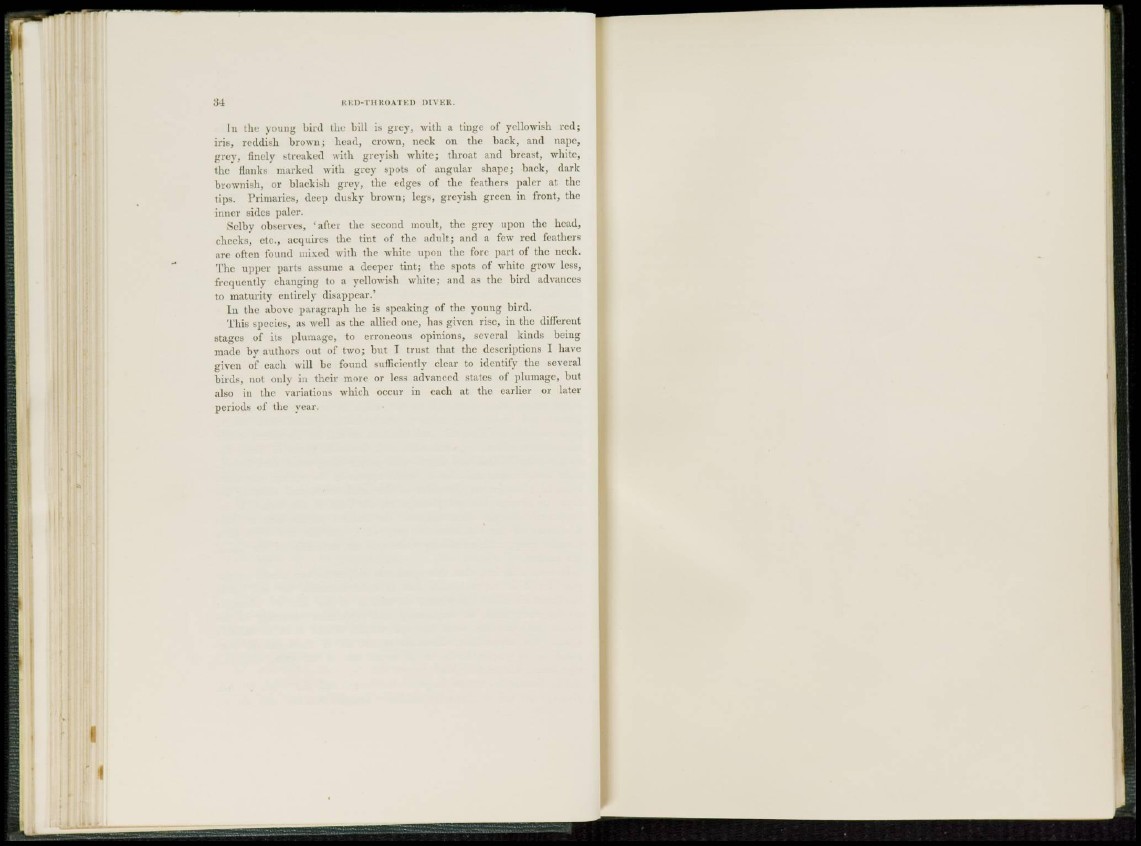
I n the young bird the bill is g r e y , with a tinge of yellowish red;
i r i s , reddish brown; head, crown, neck on the back, and nape,
grey, finely streaked with greyish white; throat and breast, white,
t h e flanks marked with grey spots of angular shape; back, dark
brownish, or blackish grey, the edges of the feathers paler at the
tips. Primaries, deep dusky brown; legs, greyish green in front, the
i n n e r sides paler.
Selby observes, 'after the second moult, the grey upon the head,
checks, etc., acquires the tint of the adult; and a few red feathers
are often found mixed with the white upon the fore part of the neck.
The upper parts assume a deeper tint; the spots of white grow less,
frequently changing to a yellowish white; and as the bird advances
to maturity entirely disappear.'
I n the above p a r a g r a p h he is speaking of the young bird.
Thi s species, as well as t h e allied one, has given rise, in the different
stages of its plumage, to erroneous opinions, several kinds being
made by authors out of two; but I trust that the descriptions 1 have
given of each will be found sufficiently clear to identify the several
b i r d s , not only in their more or less advanced states of plumage, but
also in the variations which occur in each at the earlier or later
periods of the year.